Treatable Cases
Elevating Smiles. Elevating you.

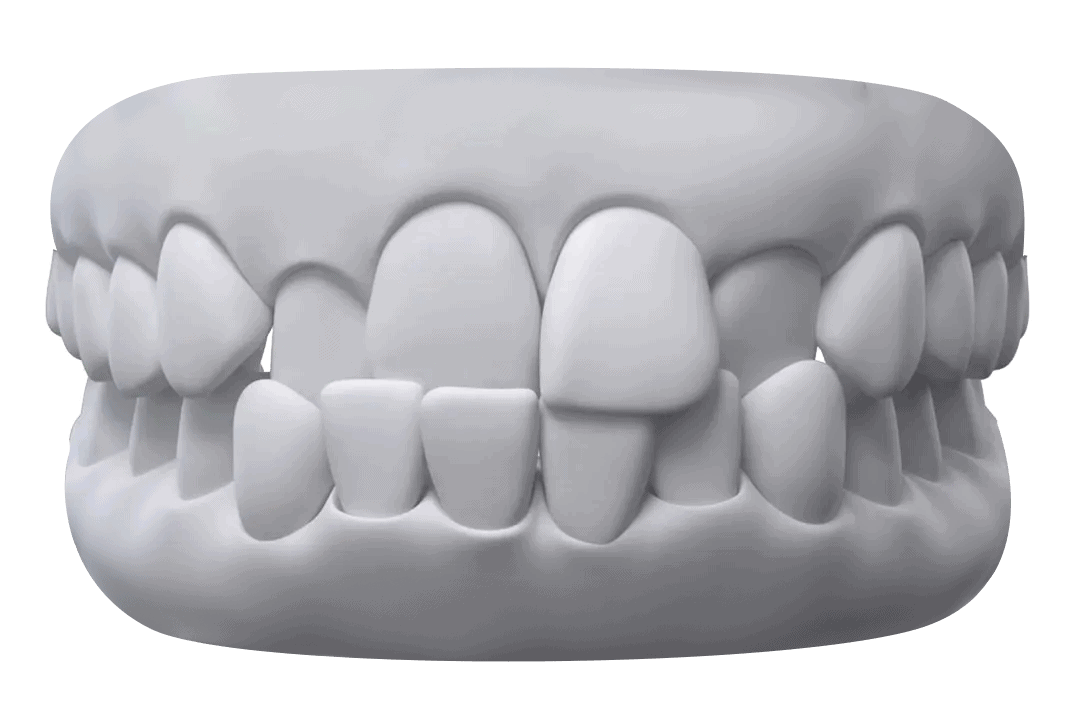
Crossbite
A crossbite occurs when one or more of your upper teeth sit inside your lower teeth when you bite down, instead of aligning properly on the outside. This misalignment can affect either the front teeth (anterior crossbite) or the back teeth (posterior crossbite) and may involve a single tooth or multiple teeth. Crossbites can be caused by genetics, abnormal jaw growth, prolonged thumb-sucking, or delayed loss of baby teeth.
If left untreated, a crossbite can lead to several oral health issues, including:
- If left untreated, a crossbite can lead to several oral health issues, including:
- Uneven Wear on Your Teeth: The misalignment puts extra pressure on certain teeth, leading to premature wear and tear.
- Gum Recession: Teeth in crossbite positions can cause damage to the surrounding gum tissue, potentially leading to gum recession.
- Jaw Pain and TMJ Disorders: The imbalance in your bite can create strain on the jaw joints, leading to discomfort and potential TMJ problems.
- Tooth Chipping or Fractures: The uneven bite can increase the risk of chipping or fracturing teeth.
- Bone Loss: Over time, the pressure caused by a crossbite can result in the deterioration of the supporting bone structure around affected teeth.

how we treat crossbite
At SMILE-FX, we offer advanced orthodontic treatments to correct crossbites and restore proper alignment to your smile. Depending on the severity and complexity of your crossbite, we may recommend braces, clear aligners (such as OrthoFX or Invisalign), or a combination of both. Braces are a traditional, highly effective solution for more complex cases, while clear aligners offer a more discreet, comfortable option for mild to moderate cases.
Clear aligners use custom-made, removable trays that gradually shift your teeth into their ideal position. This option is particularly popular with adults and teens who want a nearly invisible treatment. Both braces and clear aligners are designed to correct the alignment of your teeth and improve your bite, helping you avoid the potential long-term complications of a crossbite.
why early treatment is key
Treating a crossbite as early as possible is crucial for preventing more serious dental problems in the future. If you suspect you or your child may have a crossbite, early intervention can make a significant difference. At SMILE-FX, our experienced, board-certified orthodontists will work closely with you to develop a personalized treatment plan that meets your unique needs and ensures a healthier, well-aligned smile for years to come.
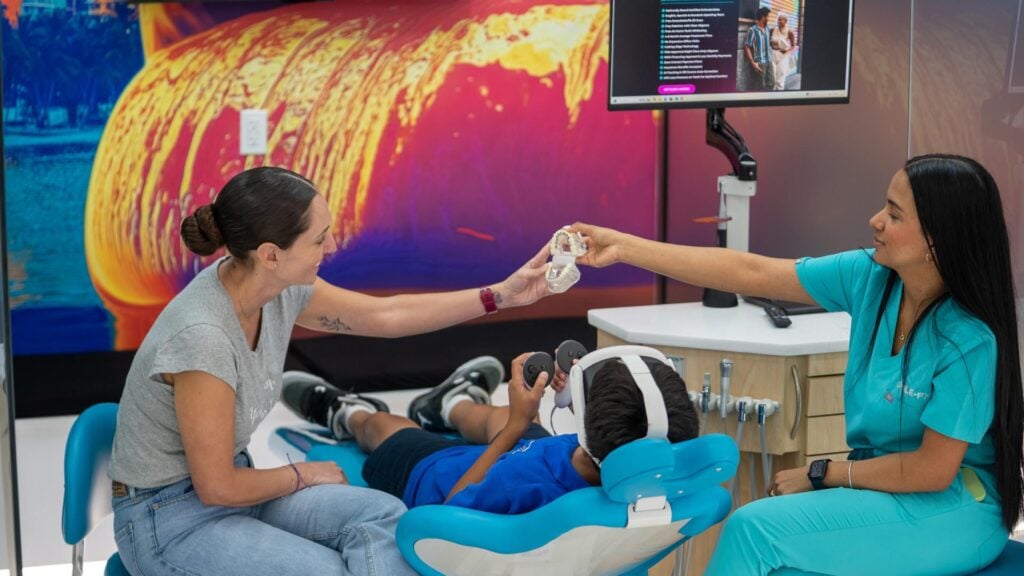
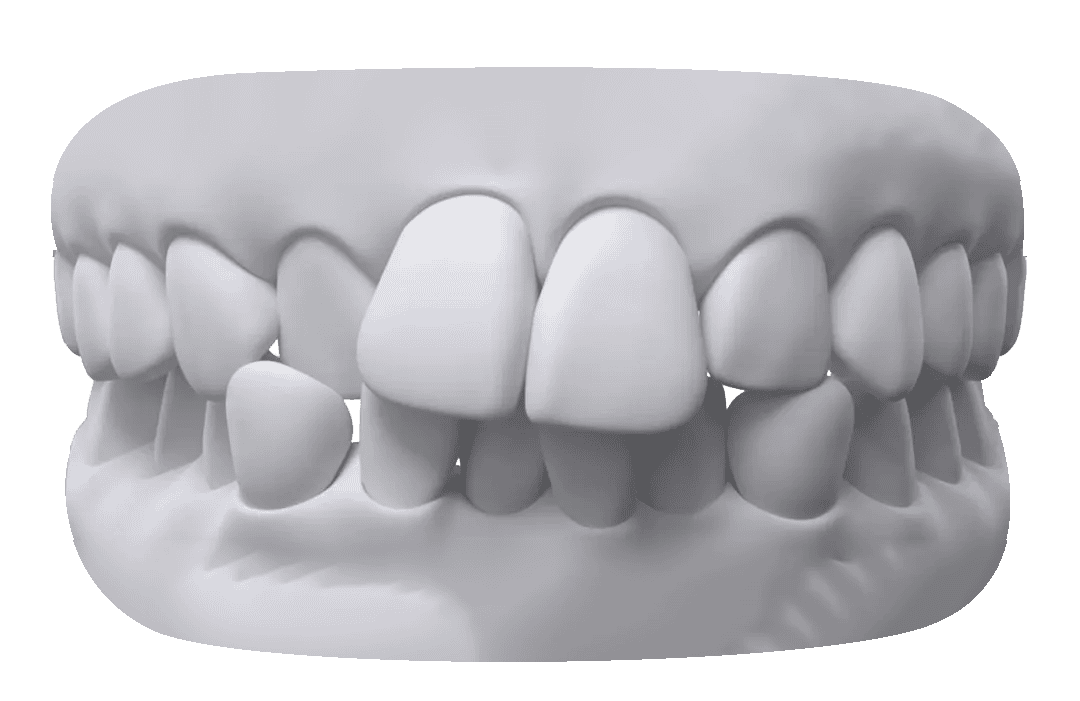
Crowded Teeth
Crowded teeth occur when there isn’t enough space in your jaw to accommodate all of your teeth properly. As a result, your teeth can overlap, twist, or get pushed to the front or back, creating a crowded appearance. This condition can develop due to factors such as genetics, early loss of baby teeth, or even habits like thumb-sucking during childhood.
Crowded teeth can cause more than just aesthetic concerns. The overlapping of teeth can make it difficult to maintain proper oral hygiene, leading to an increased risk of plaque buildup, cavities, and gum disease. In severe cases, crowded teeth can also lead to problems with your bite, jaw pain, or even tooth wear and damage over time.
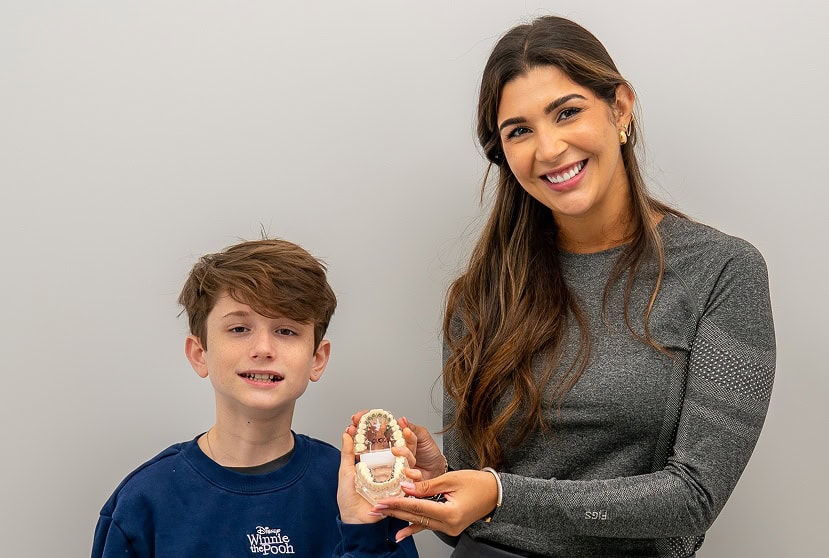
how we treat crowded teeth
At SMILE-FX, we offer a range of orthodontic treatments to effectively address crowded teeth, creating a healthier, more functional smile. Depending on the severity of your crowding, we may recommend:
- Braces: Traditional metal or ceramic braces are a highly effective option for correcting crowded teeth. Braces use brackets and wires to gradually move your teeth into better alignment.
- Clear Aligners: For a more discreet option, clear aligners like OrthoFX or Invisalign can also correct crowding. These custom-made, removable aligners are designed to gently shift your teeth into place over time. Aligners are ideal for patients seeking a less noticeable and more flexible treatment option.
why addressing crowded teeth is important
Leaving crowded teeth untreated can lead to several long-term dental issues. Crowding can make it challenging to clean between your teeth properly, increasing your risk of cavities and gum disease. Additionally, severe crowding can cause uneven wear on your teeth, which may lead to chipping or cracking. Over time, the improper alignment of your teeth may also result in bite problems that affect your jaw joints, leading to discomfort or TMJ disorders.
By seeking orthodontic treatment, you can prevent these potential complications while achieving a straighter, healthier smile. At SMILE-FX, our board-certified orthodontists will assess your unique needs and develop a personalized treatment plan that works for you. Whether you choose braces or clear aligners, we’ll help you achieve the smile you’ve always wanted, improving both your oral health and confidence.



Crooked Teeth
Crooked teeth occur when your teeth don’t align properly within your mouth. This can result from a variety of factors, including genetics, childhood habits (such as thumb-sucking), trauma, or even early loss of baby teeth. Crooked teeth can affect both the appearance and function of your smile, making it more difficult to clean your teeth effectively and increasing the risk of oral health issues like cavities, gum disease, and uneven wear on your teeth.
Crooked teeth can range from mild misalignment to more severe cases where teeth significantly overlap or shift out of place. Not only can this impact your self-confidence, but it can also lead to functional problems with your bite, making it harder to chew or speak properly. Left untreated, crooked teeth can place additional stress on your jaw joints, potentially causing discomfort or TMJ disorders.
At SMILE-FX, we offer advanced orthodontic solutions to help straighten crooked teeth and improve the function of your smile. Our expert team will assess your individual needs and recommend a personalized treatment plan, which may include braces or aligners.

should i straighten crooked teeth?
Correcting crooked teeth is not just about aesthetics — it also plays a crucial role in maintaining your oral health. Crooked teeth can be difficult to clean properly, which may lead to plaque buildup, cavities, and gum disease. In addition, misaligned teeth can cause uneven wear, increasing the risk of chipping, cracking, or other damage.
By addressing crooked teeth early, you can prevent these potential complications and enjoy a healthier, more beautiful smile. At SMILE-FX, we use the latest technology to provide high-quality orthodontic care, ensuring your treatment is both effective and efficient. Our board-certified specialists are dedicated to helping you achieve the best results possible, so you can feel confident in your smile at any age.
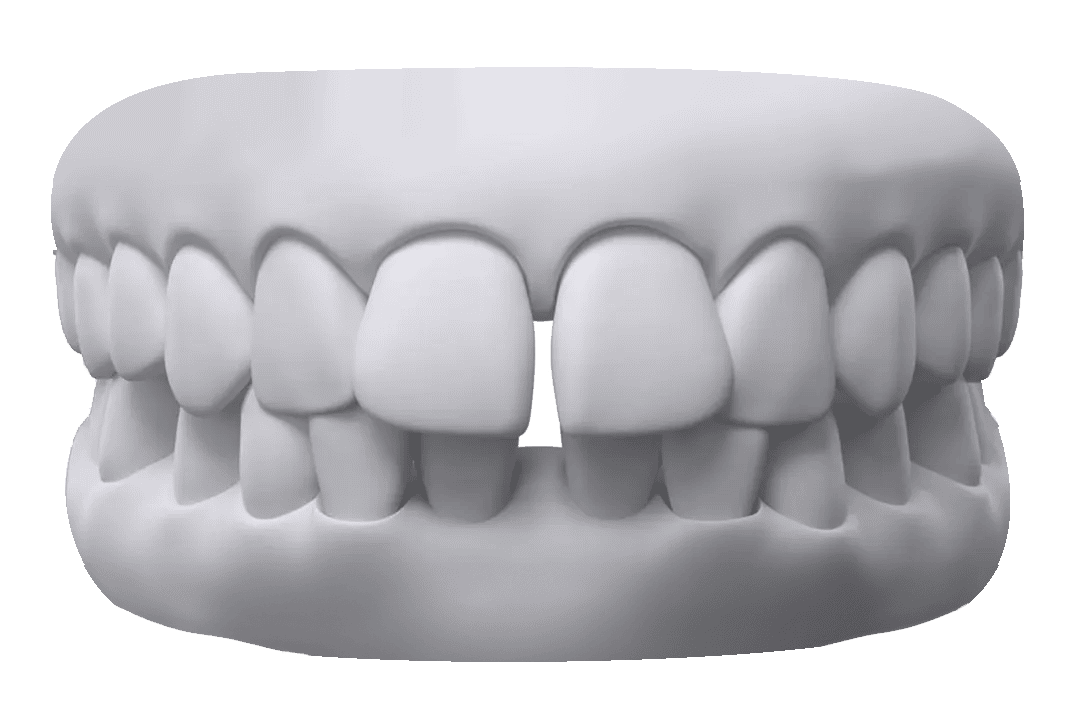
Gapped Teeth
Gapped teeth, also known as diastema, occur when there is extra space between two or more teeth. This condition is most commonly seen between the upper front teeth but can appear anywhere in the mouth. Gaps between teeth can be caused by various factors, including genetics, an imbalance between the size of the teeth and jaw, thumb-sucking in childhood, or even gum disease. While some people view their gapped teeth as a unique part of their smile, larger gaps may pose functional and oral health concerns.
Gapped teeth can sometimes affect your bite, cause difficulty with chewing, or make you more susceptible to food getting trapped between teeth, leading to issues like plaque buildup and gum problems. In some cases, gaps may also cause speech difficulties, such as a lisp.
why close gaps in your smile
Closing gaps between teeth can improve both the aesthetics and function of your smile. While some may feel confident with their natural gaps, addressing larger spaces can help prevent potential oral health issues. Food particles and plaque can easily get trapped in gaps, increasing your risk of cavities and gum disease. Additionally, untreated gaps can sometimes lead to shifting of adjacent teeth, causing further misalignment and bite problems.
At SMILE-FX, we understand that every smile is unique, and we are dedicated to providing personalized care to help you achieve the look and function you desire. Whether you choose braces or clear aligners, our advanced treatment options can help close gaps, improve your bite, and give you the confident smile you’ve always wanted.

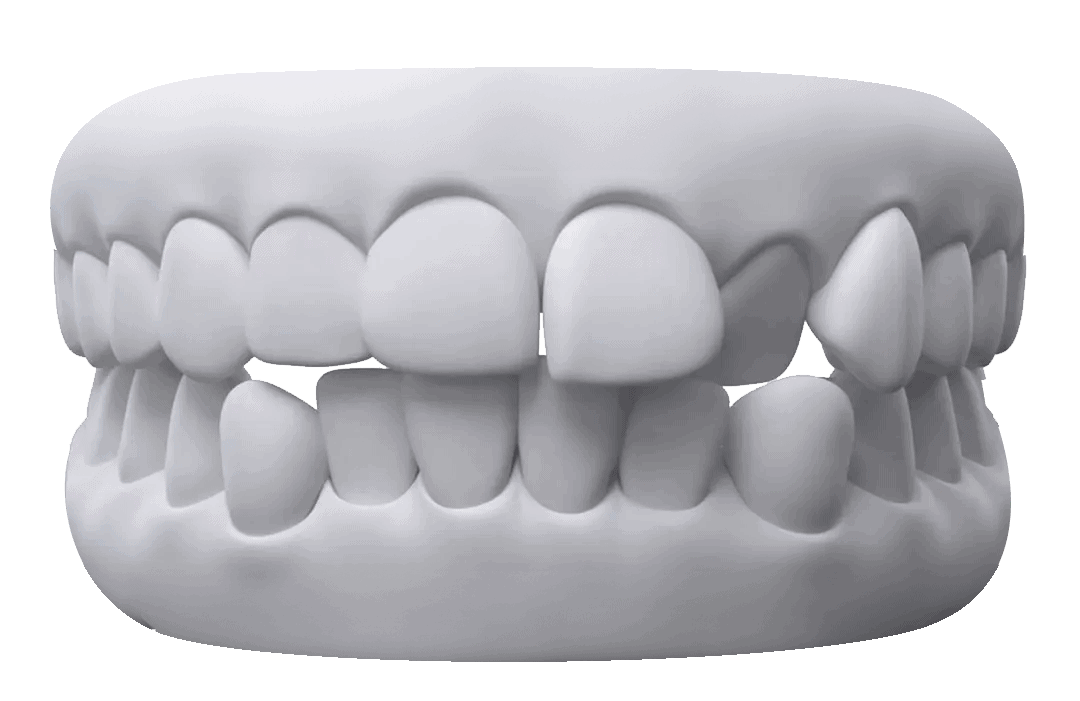
Generally Straight Teeth
Generally straight teeth refer to teeth that are mostly aligned but may have minor imperfections such as small gaps, slight rotations, or minimal crowding. While the teeth appear mostly straight, small adjustments can enhance the smile’s aesthetics and improve functionality. Even if your teeth are relatively aligned, achieving a perfectly straight smile can still make a significant difference in your confidence and overall oral health.
why consider treatment for straighter teeth?
Even minor misalignments can impact your bite, making it harder to clean your teeth effectively. Over time, this may lead to plaque buildup, gum disease, or cavities. Correcting these small imperfections can make a big difference in maintaining a healthy smile. Plus, straightening your teeth can prevent future dental problems and enhance your appearance.
At SMILE-FX, we offer state-of-the-art orthodontic solutions to help you achieve an even more polished smile. Our treatments are designed to address minor issues, such as small gaps or mild crowding, and give you that final boost of confidence.
If your teeth are already generally straight, clear aligners like OrthoFX or Invisalign can fine-tune your alignment discreetly. These custom, removable trays gradually shift your teeth into their ideal position, offering a subtle and convenient treatment option.
For those seeking more traditional treatment, braces can be used to make precise adjustments to the position of your teeth. Modern braces are smaller and more efficient than ever, and clear ceramic options offer a less visible solution.
benefits of a perfectly aligned smile
While your teeth may be generally straight, achieving perfect alignment offers numerous benefits, including:
- Improved Oral Health: Straight teeth are easier to clean, reducing the risk of cavities and gum disease.
- Enhanced Confidence: Perfectly aligned teeth give your smile a more polished, aesthetically pleasing appearance.
- Better Functionality: Even slight adjustments can improve your bite, preventing future jaw pain or issues with tooth wear.
At SMILE-FX, our board-certified specialists use the latest technology to provide personalized care for every patient. Whether you’re seeking subtle refinements or a major transformation, our team will help you achieve a smile you can be proud of.
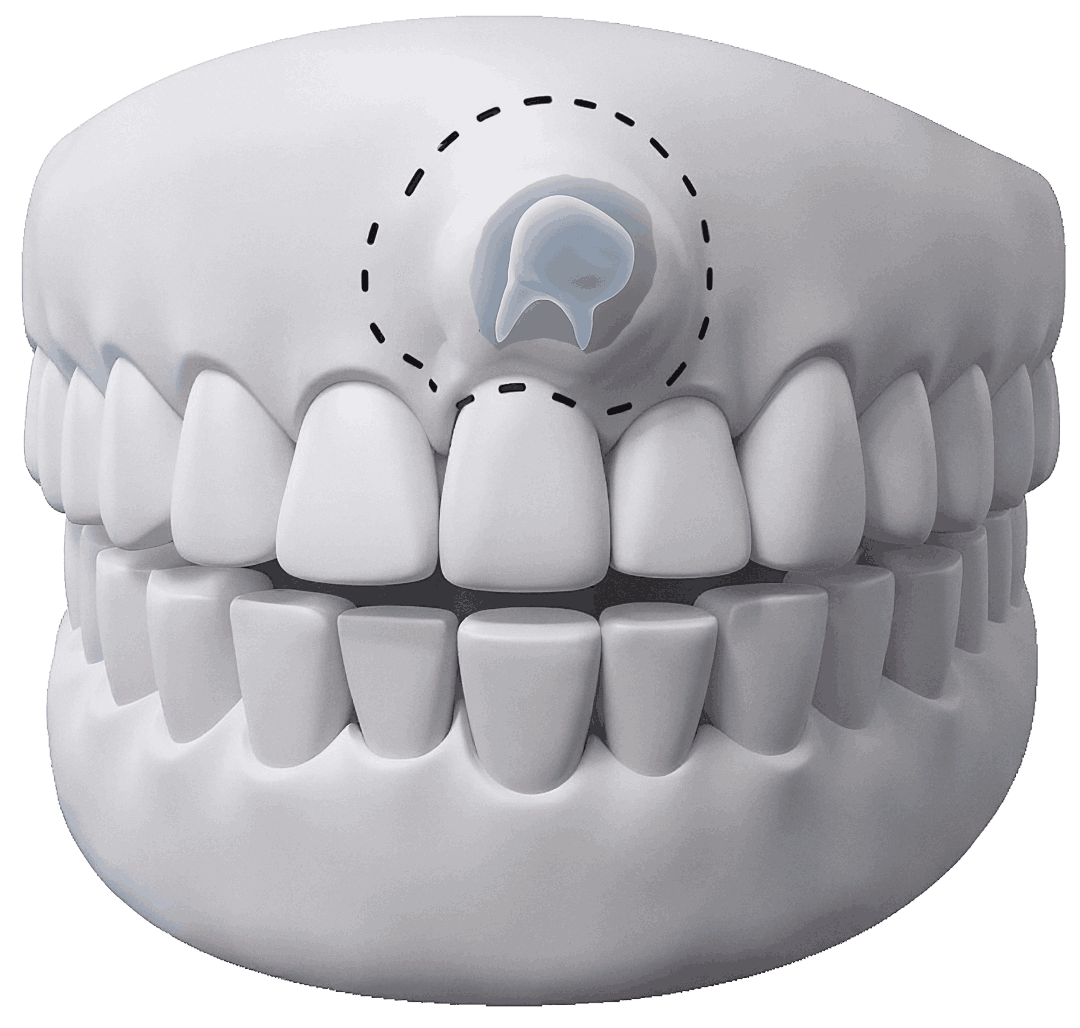
Impacted Teeth
Impacted teeth occur when a tooth is unable to fully emerge or grow in its correct position due to being blocked by another tooth, bone, or soft tissue. This condition most commonly affects wisdom teeth but can also occur with other teeth like canines. Impacted teeth may remain partially or completely trapped beneath the gum line, which can lead to discomfort, swelling, and even infections if left untreated.
Impacted teeth can result from a lack of space in the jaw, overcrowding, or improper tooth eruption. In some cases, an impacted tooth may cause nearby teeth to shift or become misaligned, which can affect the overall appearance and functionality of your smile.
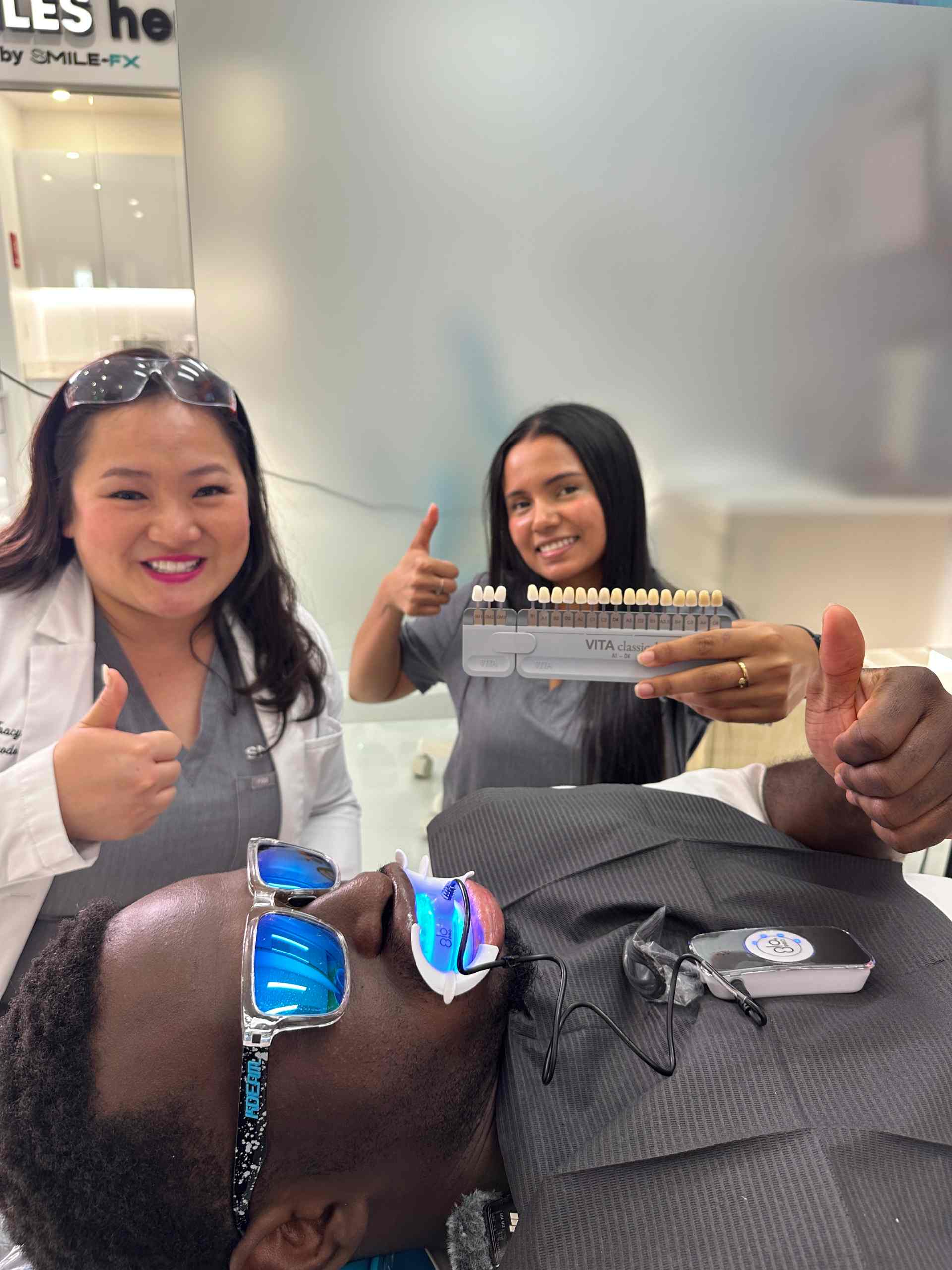
the importance of treating impacted teeth
Leaving impacted teeth untreated can lead to several oral health issues, including:
- Pain and Discomfort: Impacted teeth can cause pressure on surrounding teeth, leading to soreness or jaw pain.
- Infection: Bacteria can easily become trapped around an impacted tooth, leading to gum infections, abscesses, or tooth decay.
- Misalignment: An impacted tooth may shift nearby teeth out of position, affecting your bite and potentially requiring orthodontic treatment to correct the misalignment.
Addressing impacted teeth early can help prevent these complications, preserve your oral health, and maintain the alignment of your smile.
addressing an impacted tooth
At SMILE-FX, we use advanced technology to diagnose and treat impacted teeth with precision and care. Depending on the severity and location of the impacted tooth, treatment may include:
- Orthodontic Solutions: In some cases, braces or clear aligners can help guide an impacted tooth into its proper position by gradually creating space in the jaw.
- Surgical Removal: If the impacted tooth cannot be moved into place, surgical removal may be necessary to prevent further issues. This is especially common for impacted wisdom teeth.
Our board-certified orthodontists will evaluate your situation and recommend a customized treatment plan that prioritizes your comfort and long-term oral health.
Impacted teeth require expert care, and at SMILE-FX, we tailor our treatments to fit your unique needs. With cutting-edge technology and personalized treatment plans, our specialists ensure that your experience is as smooth and efficient as possible. Whether through orthodontic adjustments or surgical interventions, we’re here to help you achieve a healthy, aligned smile free from discomfort.

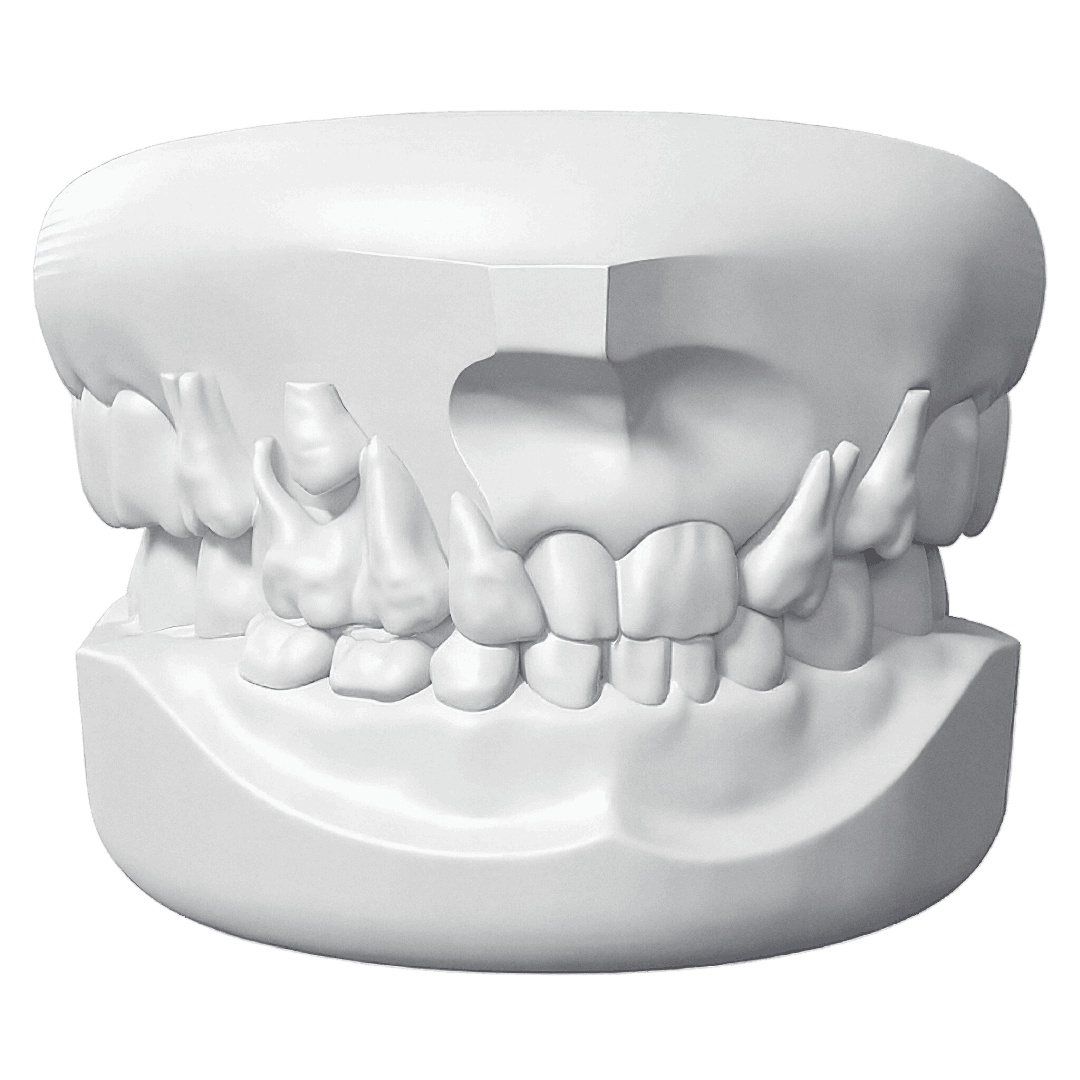
Mixed Baby & Permanent Teeth
The mixed dentition phase refers to the stage when children have both baby (primary) teeth and permanent (adult) teeth in their mouth. This phase typically occurs between the ages of 6 and 12, as baby teeth start to fall out and permanent teeth begin to take their place. During this time, it’s common for kids to have a combination of both, which can sometimes lead to alignment issues or crowding as new teeth emerge.
The mixed teeth phase is crucial for monitoring your child’s dental development. It’s during this time that early orthodontic intervention, also known as Phase I treatment, may be recommended to address any potential issues before they worsen.
the importance of early treatment
Early orthodontic treatment can guide the growth of the jaw and the alignment of teeth to prevent more serious problems down the road. By addressing dental issues during the mixed dentition phase, orthodontists can:
- Correct Bite Issues: Early treatment can help correct bite problems like crossbite, overbite, or underbite, which are easier to address while the jaw is still developing.
- Create Space for Permanent Teeth: If the permanent teeth don’t have enough room to erupt properly, orthodontic treatment can help guide them into the correct position and prevent overcrowding.
- Prevent Further Complications: Treating alignment issues early can reduce the need for more extensive treatment in the future, potentially shortening treatment time and simplifying the process.
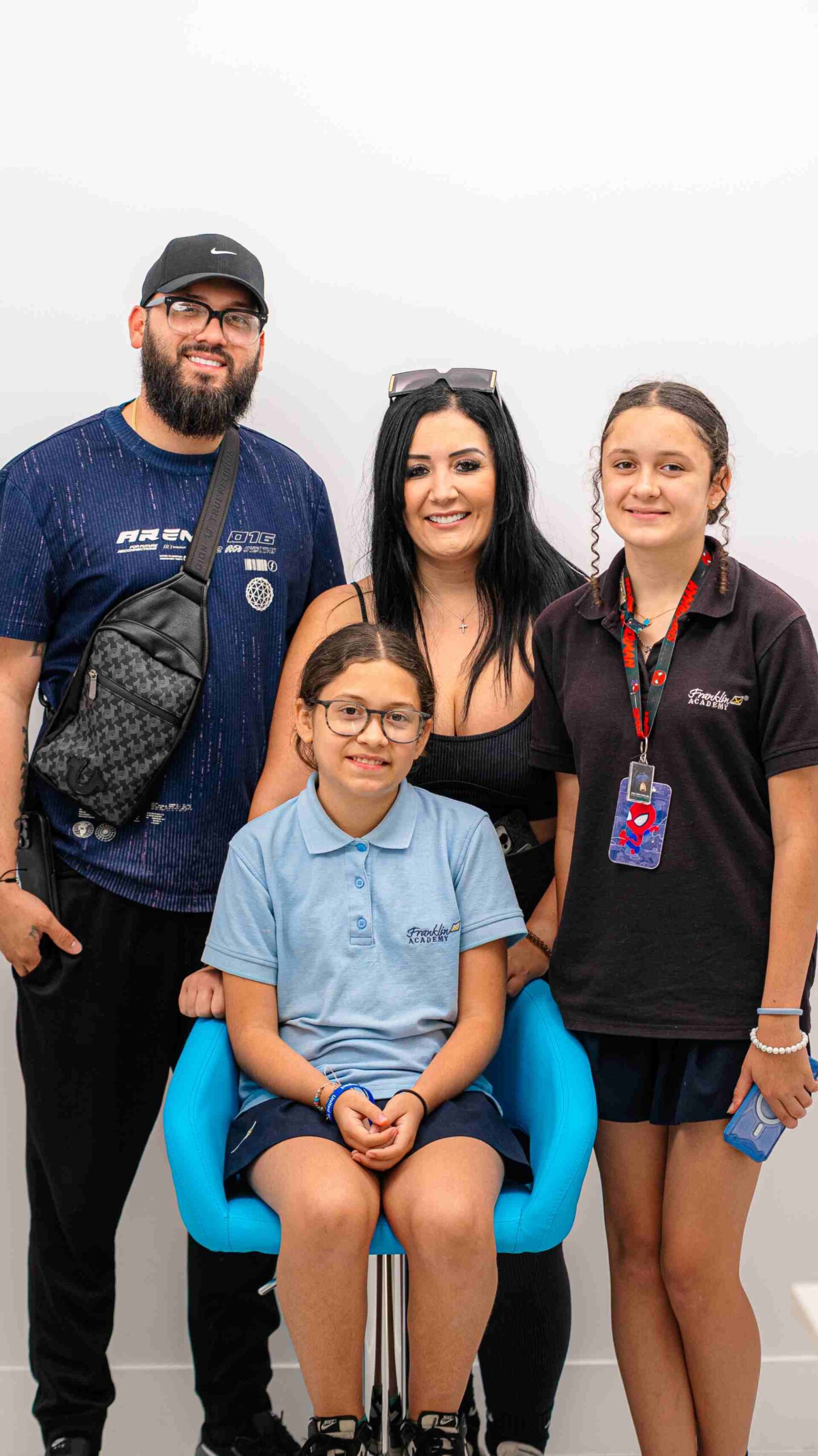
how we help
At SMILE-FX, we specialize in early orthodontic intervention to ensure your child’s teeth develop properly during this crucial phase. Our board-certified orthodontists use state-of-the-art technology to monitor the development of your child’s smile and identify any potential issues early on.
Phase One Treatment may involve:
- Space Maintainers: These devices help hold space for permanent teeth if a baby tooth falls out prematurely, ensuring there’s enough room for proper alignment.
- Expanders: Palatal expanders can help widen the upper jaw to create more space for teeth, preventing crowding and improving the bite.
- Partial Braces or Aligners: In some cases, limited braces or clear aligners may be used to guide certain teeth into place and correct minor alignment issues.
By starting early, we can help your child avoid more complex treatment later and set the foundation for a healthy, beautiful smile.
Our team at SMILE-FX is dedicated to providing personalized, effective care for kids in the mixed dentition stage. We create customized treatment plans designed to ensure optimal development and prevent future dental issues. With our expertise and cutting-edge technology, we make early orthodontic treatment a positive and proactive step toward your child’s long-term oral health.
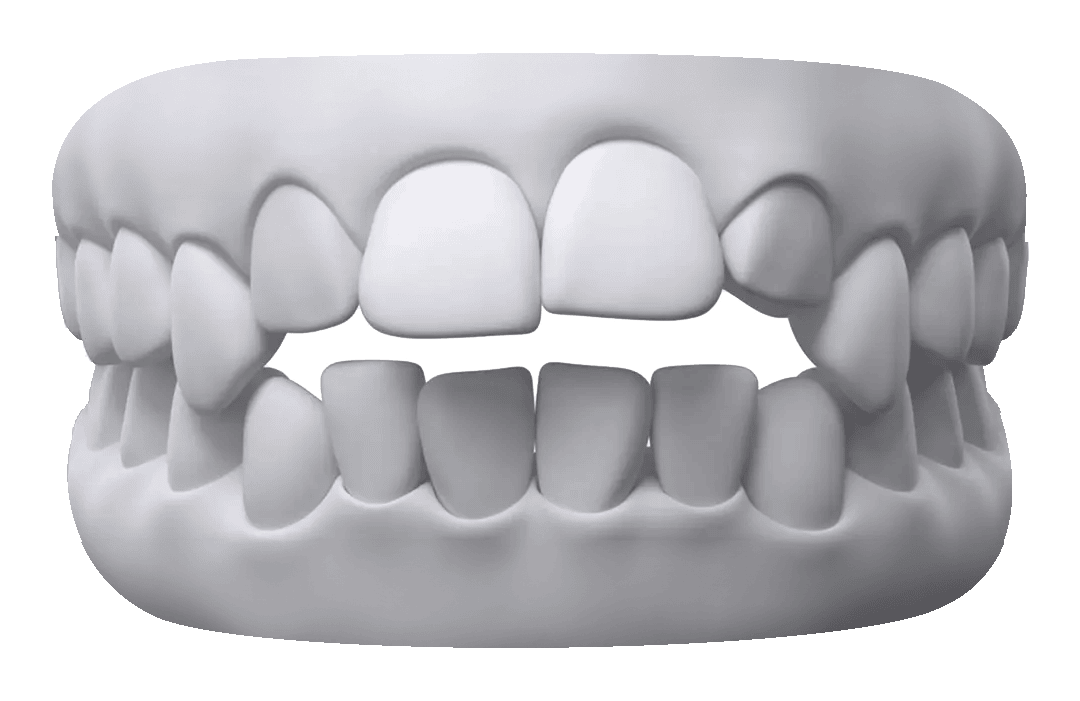
Openbite
An open bite is a type of malocclusion where the upper and lower teeth do not make contact when the mouth is closed, leaving a noticeable gap between them. This condition can occur in the front (anterior open bite) or the back (posterior open bite) of the mouth. It can affect how you speak, chew, and even smile.
An open bite may develop due to various factors, including thumb-sucking, tongue thrusting, genetics, or habits like excessive pacifier use. If left untreated, it can lead to speech difficulties, difficulty biting and chewing, and even contribute to jaw problems over time.
treating an openbite
Addressing an open bite is essential not only for cosmetic reasons but also for overall oral function. If you have an open bite, you may experience:
- Difficulty Chewing: Without proper contact between the teeth, it can be challenging to bite and chew food effectively.
- Speech Issues: Open bites often cause speech impediments, including a lisp or difficulty pronouncing certain sounds.
- Jaw Discomfort: Over time, an open bite can lead to jaw pain or tension due to improper bite alignment.
Correcting an open bite can significantly improve your ability to chew, speak, and smile with confidence. At SMILE-FX, we combine innovative technology with personalized care to ensure effective and lasting results. Our goal is to help you achieve a functional, well-aligned bite and a smile you love.
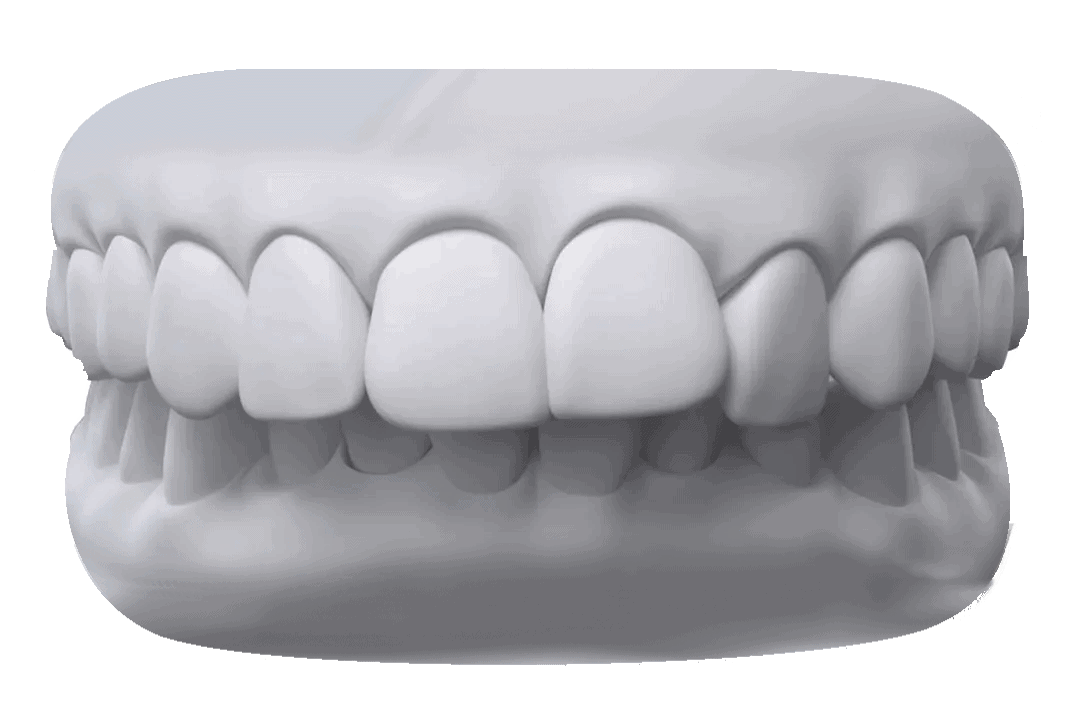
Overbite
An overbite, often referred to as a “deep bite,” occurs when the upper front teeth significantly overlap the lower front teeth when the mouth is closed. This dental condition is a common type of malocclusion and can vary in severity. While a slight overbite is normal, excessive overlap can lead to various dental and health issues.
Overbites can result from several factors, including genetics, thumb-sucking during childhood, prolonged pacifier use, or misaligned jaw development. In addition to being a cosmetic concern, a pronounced overbite can impact oral function, leading to difficulties with chewing and speaking.
Addressing an overbite is crucial for both aesthetic and functional reasons. Here are some potential complications associated with untreated overbites:
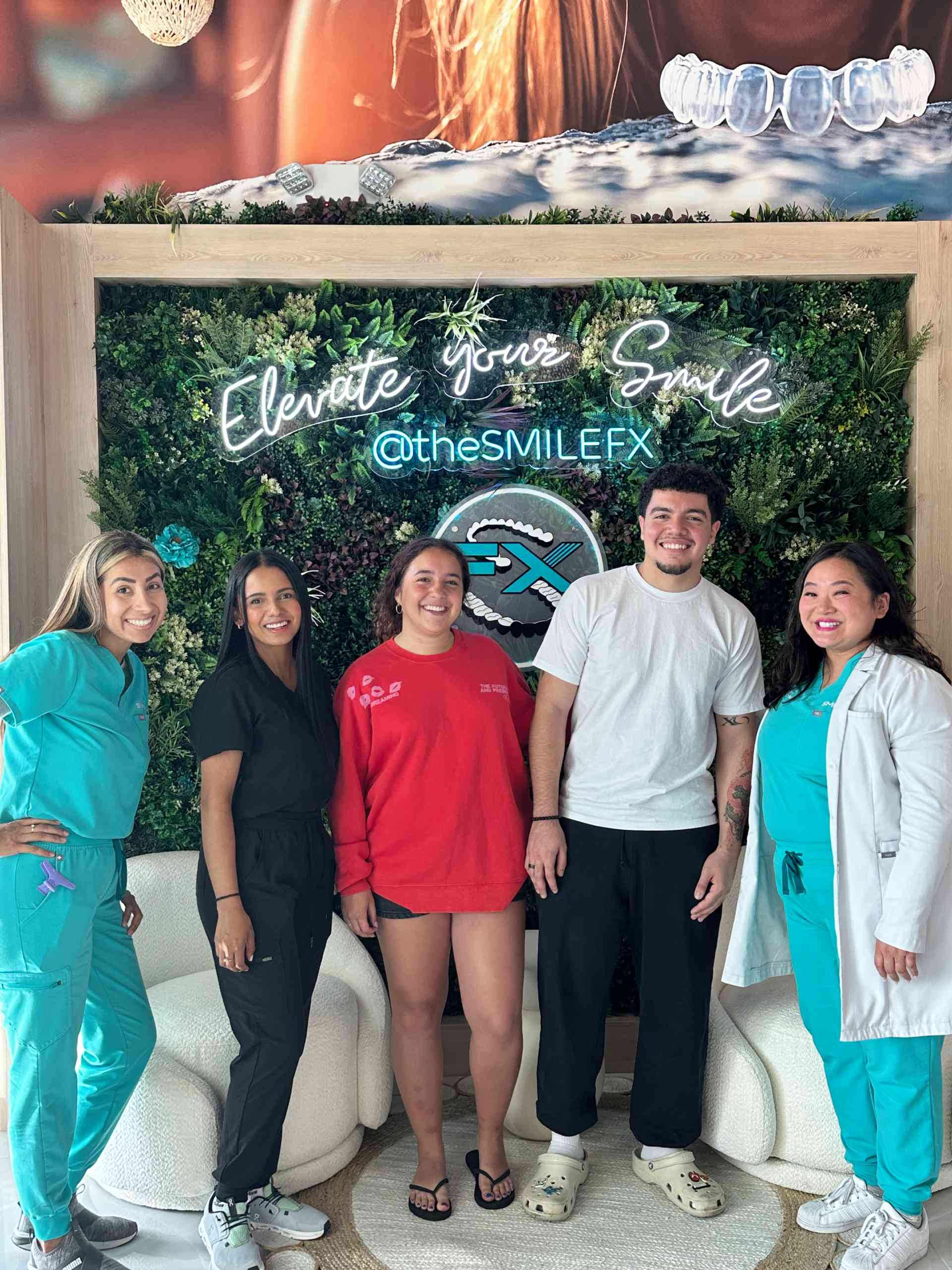
Jaw Pain and Discomfort: A significant overbite can put excessive strain on the jaw muscles and joints, potentially leading to pain and discomfort, including temporomandibular joint (TMJ) disorders.
Tooth Wear: Overbites can cause uneven wear on teeth, leading to premature damage, chips, or fractures.
Speech Difficulties: Severe overbites can sometimes impact speech clarity, making certain sounds challenging to pronounce.
By correcting an overbite, you can improve not only the appearance of your smile but also your overall oral health and functionality.
How We can Help
At SMILE-FX, our team of board-certified orthodontists specializes in diagnosing and treating overbites with tailored solutions designed to fit your unique needs. Treatment options may include:
- Braces: Traditional braces are effective in repositioning teeth and realigning the bite. They provide precise adjustments to correct the overlap and improve alignment.
- Clear Aligners: For patients seeking a more discreet option, clear aligners like OrthoFX or Invisalign can gently shift teeth into proper alignment over time, making them an appealing choice for many adults and teens.
Correcting an overbite can lead to a more balanced smile, improved oral health, and enhanced confidence. At SMILE-FX, we utilize advanced technology and a personalized approach to ensure you receive the best care possible. Our goal is to help you achieve a functional, beautiful smile that enhances your quality of life.
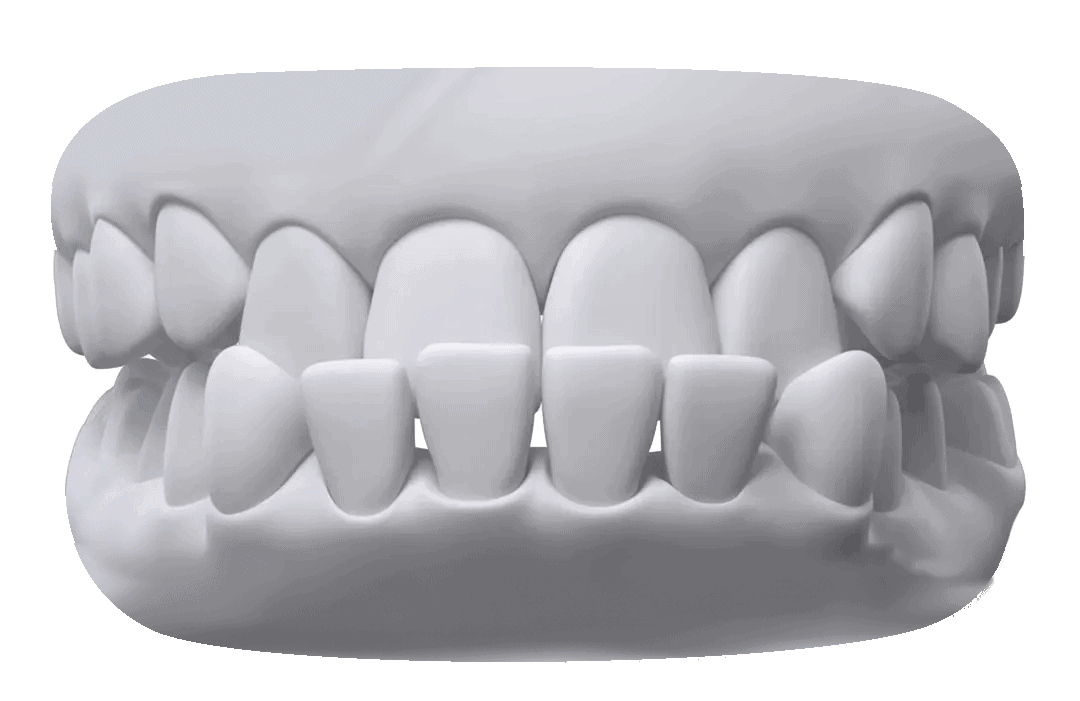
Underbite
An underbite is a type of dental malocclusion that occurs when the lower front teeth extend beyond the upper front teeth when the mouth is closed. This misalignment can range from mild to severe and can affect the overall aesthetics of your smile as well as your oral function. Underbites are often caused by genetic factors, prolonged thumb-sucking, or early loss of baby teeth, which can lead to the surrounding teeth shifting and the jaw developing improperly.

correcting an underbite
Addressing an underbite is essential for both cosmetic and functional reasons. Untreated underbites can lead to several issues, including:
- Jaw Discomfort: The misalignment can cause strain on the jaw muscles and joints, leading to discomfort, pain, or temporomandibular joint (TMJ) disorders.
- Difficulty Chewing and Speaking: An underbite can interfere with normal biting and chewing, making it challenging to eat certain foods. It may also affect speech clarity and pronunciation.
- Tooth Wear and Damage: The misalignment can cause uneven wear on teeth, increasing the risk of chips, fractures, and other dental problems over time.
By correcting an underbite, you can enhance both the functionality and aesthetics of your smile. At SMILE-FX, our experienced board-certified orthodontists are committed to providing personalized treatment plans to address underbites effectively. Depending on the severity of the condition, treatment options may include:
- Braces: Traditional braces are a common and effective way to realign the teeth and jaws, correcting the underbite over time. They allow for precise adjustments to ensure a proper bite alignment.
- Clear Aligners: For a more discreet treatment option, clear aligners like OrthoFX or Invisalign can gently shift the teeth into the correct position without the need for metal brackets and wires.
In more severe cases, surgical intervention may be required to correct the jaw alignment. Our team will thoroughly evaluate your individual situation and determine the best course of action.